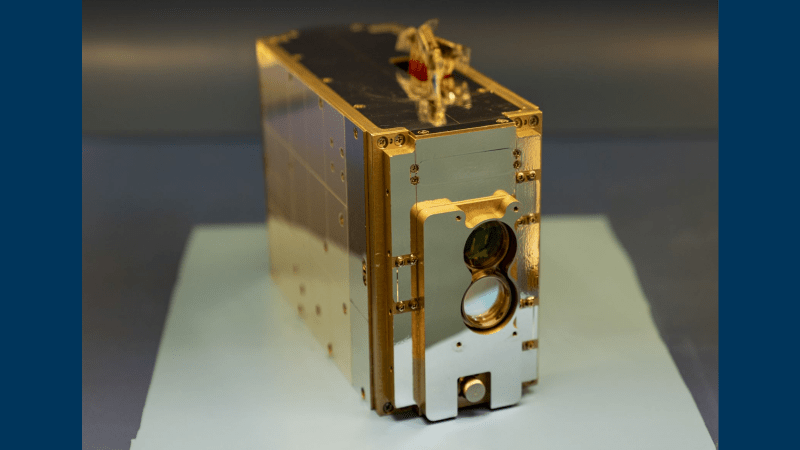
[NASA] and a team of partners has demonstrated a space-to-ground laser communication system operating at a record breaking 200 gigabit per second (Gbps) data rate. The TeraByte InfraRed Delivery (TBIRD) satellite payload was designed and built by [MIT Lincoln Laboratory]. The record of the highest data rate ever achieved by a space-to-Earth optical communication link surpasses the 100 Gbps record set by the same team in June 2022.
TBIRD makes passes over an ground station having a duration of about six-minutes. During that period, multiple terabytes of data can be downlinked. Each terabyte contains the equivalent of about 500 hours of high-definition video. The TBIRD communication system transmits information using modulated laser light waves. Traditionally, radio waves have been the medium of choice for space communications. Radio waves transmit data through space using similar circuits and systems to those employed by terrestrial radio systems such as WiFi, broadcast radio, and cellular telephony. Optical communication systems can generally achieve higher data rates, lower loses, and operate with higher efficiency than radio frequency systems.
TBIRD is a 3U sized satellite payload, meaning it is approximately the size of box of tissues. The TBIRD payload is carried aboard NASA’s Pathfinder Technology Demonstrator 3 (PTD-3) satellite. PTD-3 is a CubeSat measuring about the size of two cereal boxes stacked together. The satellite is synchronized to the Earth’s orbit around the Sun such that it passes over the same ground station at the same times, twice each day.
Achieving the record breaking TBIRD data transmissions truly takes a village. The TBIRD space payload was designed and built by [MIT Lincoln Laboratory]. The payload flies aboard the PTD-3 satellite built and operated by [Terran Orbital]. The PTD-3 satellite was carried into orbit by a [SpaceX] Transporter-5 rideshare mission launched from the [NASA Kennedy Space Center]. The TBIRD mission and concept was developed at the [NASA Goddard Space Flight Center] while the PTD-3 program and mission is managed by the [NASA Ames Research Center]. Finally, the ground station for the data link is part of the Optical Communications Test Laboratory at the [NASA Jet Propulsion Lab].
Of course, future space missions can embed the record breaking optical communication technology demonstrated by TBIRD. Downlinking massive amounts of data from space to Earth is imperative to evolving scientific missions. For example, we expect to enjoy live 4K ultra-high-definition video streaming from the Moon thanks to the Orion Artemis II Optical Communications System (O2O).
NASA Team Sets New Space-to-Ground Laser Communication Record
Source: Manila Flash Report
0 Comments